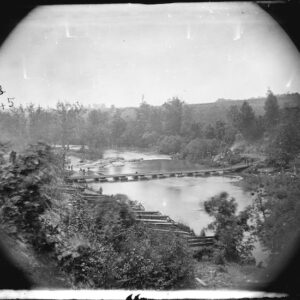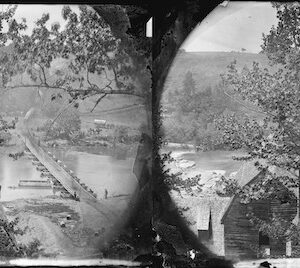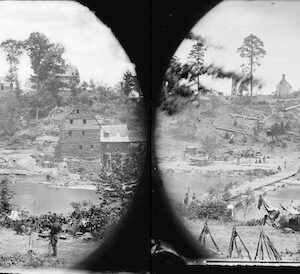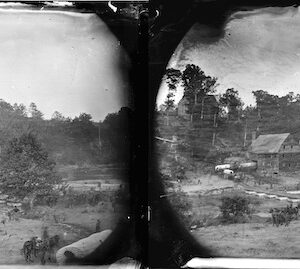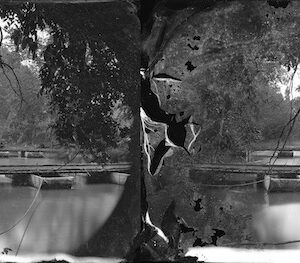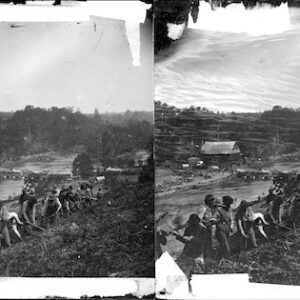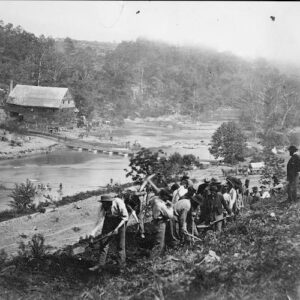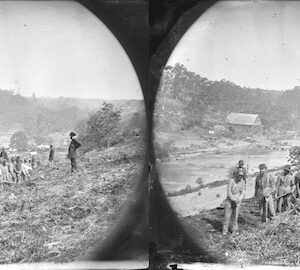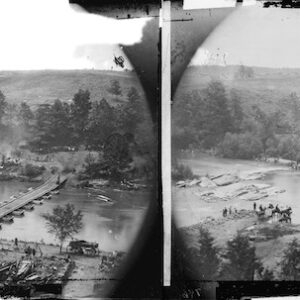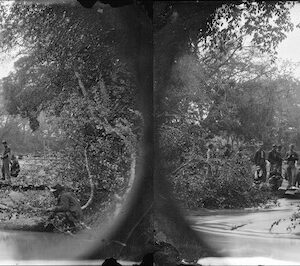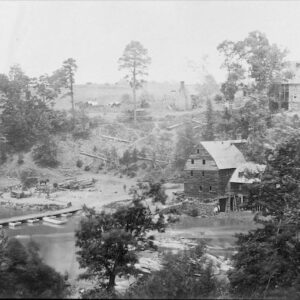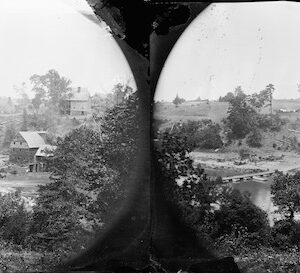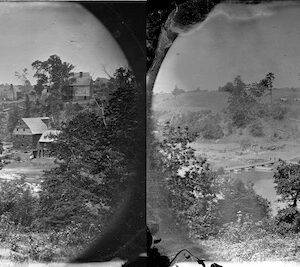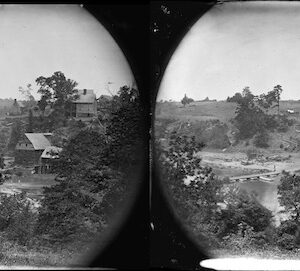Tag: Jericho Mills VA
Wikipedia says: The Battle of North Anna was fought May 23–26, 1864, as part of Union Lt. Gen. Ulysses S. Grant’s Overland Campaign against Confederate Gen. Robert E. Lee’s Army of Northern Virginia. It consisted of a series of small actions near the North Anna River in central Virginia, rather than a general engagement between the armies. The individual actions are sometimes separately known as: Telegraph Road Bridge and Jericho Mills (for actions on May 23); Ox Ford, Quarles Mill, and Hanover Junction (May 24).
May 23: Chesterfield Bridge and Jericho Mills
On the morning of May 23, Warren reached Mount Carmel Church and paused for instructions. Hancock’s corps came up from behind and the two units got hopelessly mixed up on the road. The corps commanders decided that Hancock would continue along the Telegraph Road to Chesterfield Bridge while Warren would cross the North Anna upstream at Jericho Mills. There were no significant fortifications to their front. Lee had misjudged Grant’s plan, assuming that any advance against the North Anna would be a mere diversion, while the main body of Grant’s army continued its flanking march to the east. At the Chesterfield Bridge crossing the Telegraph Road, a small South Carolina brigade under Col. John W. Henagan had created a dirt redoubt, and there was a small party guarding the railroad bridge downstream, but all of the other river crossings were left undefended. Grant had been presented with a golden opportunity if he moved quickly enough to take advantage of it.
The division of Maj. Gen. David B. Birney led Hancock’s column on the Telegraph Road. As they began to take fire from Henagan’s Redoubt, Birney deployed two brigades to attack: Brig. Gen. Thomas W. Egan’s brigade east of the road and Brig. Gen. Byron R. Pierce’s brigade to the west. The II Corps artillery opened fire on the Confederates and Col. Edward Porter Alexander’s First Corps artillery returned fire. General Lee, observing at the Fox house, was nearly hit by a cannonball that lodged in a door frame. Alexander was almost killed by flying bricks when a Union shell hit the house’s chimney. At 6 p.m., the Union infantry charged. Egan and Pierce were supported by Col. William R. Brewster’s brigade. Soldiers stabbed their bayonets into the earthworks and used them as makeshift ladders, allowing their comrades to climb up over their backs. Henagan’s small force was overwhelmed and they fled across the bridge. They attempted to burn it behind them, but Union sharpshooters drove them off. Hancock’s men did not attempt to cross the bridge and seize ground to the south because Alexander’s artillery was laying down heavy fire against them. Instead, they entrenched on the northern bank of the river.
At Jericho Mills, Warren found the river ford unprotected. He ordered Brig. Gen. Charles Griffin’s division to wade across and establish a beachhead. By 4:30 p.m., the rest of the corps crossed on pontoon bridges. Hearing from a prisoner that Confederates were camped nearby at the Virginia Central Railroad, Warren arranged his men into battle lines: the division of Brig. Gen. Samuel W. Crawford lined up on the left, Griffin’s on the right. Brig. Gen. Lysander Cutler’s division then began moving onto Griffin’s right. General Lee convinced his Third Corps commander, A.P. Hill, that Warren’s movement was simply a feint, so Hill sent only a single division, commanded by Maj. Gen. Cadmus M. Wilcox, along with artillery commanded by Col. William J. Pegram, to deal with Warren’s supposedly minor threat.
Wilcox and Pegram delivered a firm blow. Crawford’s division suffered heavy damage from the artillery and Griffin’s division was hit hard by the North Carolinians of Brig. Gen. James H. Lane and the South Carolinians of Brig. Gen. Samuel McGowan. Cutler’s wing, just arriving in line, was hit by the Georgians of Brig. Gen. Edward L. Thomas’s brigade, more South Carolinians under Col. Brown, and the North Carolinians of Brig. Gen. Alfred M. Scales’s brigade (temporarily commanded by Col. William L. Lowrance). Cutler’s line was broken and his men fled to the rear, but their path of retreat led to the bluffs overlooking the North Anna. Warren’s V Corps was rescued from a significant defeat by his artillery, commanded by Col. Charles S. Wainwright, which placed 12 guns on a ridge and subjected the Confederates to plunging fire. At the same time, the 83rd Pennsylvania led a portion of Brig. Gen. Joseph J. Bartlett’s brigade down a ravine and struck the right flank of Thomas’s Brigade. The Georgians fled, uncovering Scales’s flank and leaving his men in an untenable position. Seeing that reinforcements from the division of Maj. Gen. Henry Heth would not arrive in time, Wilcox ordered his men to withdraw. He had been outnumbered about 15,000 to 6,000. His division suffered 730 casualties, including Col. Brown, who was captured; Union casualties were 377. The next morning, Robert E. Lee expressed his displeasure at Hill’s performance: “General Hill, why did you let those people cross here? Why didn’t you throw your whole force on them and drive them back as Jackson would have done?”
Showing all 14 resultsSorted by latest
